QuestionQUESTION: We bought our first leopard gecko about a week and a half ago. He was doing great until about three days ago. We had an incident where he jumped out of my hand and I believe he got freaked out about our dog and dropped his tail. He did not drop it completely so he proceeded to pull it the rest of the way off with his mouth and then proceeded to eat it. He had been doing fine with it for the last three days until suddenly today he has been real lethargic and not wanting to eat or drink or really do much of anything. He will move when touched but that is about it. His color looks good but doesn't do much. Is he having issues with his tail? Or is he having issues with shedding his skin? Or could he possibly be dehydrated? Thanks in advance for any information.
ANSWER: Hi Jeremy,
It could be stress, shedding,the meal of his tail upset his stomach a bit, temperatures, or pain.
Leos stress very easily over almost anything. It doesn't always show up immediately so the dog issue could have caused it. Make sure he can't see the dog at all for the time being.
Also, double check your temperatures to make sure something hasn't changed with those. I am including a basic care sheet so that you can see a bit more on the care they need.
Does the tail end look raw and sore? Is it draining anything? If so, then he should see a vet. Make sure you are using paper towels or some other item on the floor that isn't sand, bark or litter..which no loose substrate should ever be used with a leo.
Try offering different insects..if he doesn't want to chase the crickets, try breaking the hind legs on them which will prevent them from jumping.
Also, make sure that there are no insects left in his cage after offering him is meals as the insect will go for the tail stump which can cause severe infection.
Has he pooped? The tail may have been too much of a meal for him and he is slightly blocked up..a vet needs to be seen for this so that medications can be given.
Again, if he doesn't get back to normal in a day or two, or if he gets worse, a vet is needed.
If he is ok with being handled, you can try offering water a tiny drop at a time to keep him hydrated. Generally they will lick at the water as soon as it touches his mouth. If he doesn't lick, don't continue as the water may get up his nose. Its very important that he starts to eat as that with a tail loss, they can go downhill very quick, especially when a baby. They store their fat in their tail and when they loose their tails, they have no reserves to provide "fuel" when they aren't eating.
BASIC CARE FOR A LEOPARD GECKO
Leopards are pretty easy to care for but they do need
special care. Here are some of the basic needs of your gecko.
HOUSING: The need to have at least a 20 gallon long tank for one Leo. This needs to have a secure fitting screen top...they can be quite the escape artists!!! They need to have a humid hide box.You can make this with something as simple as a small plastic dish with a hole cut in one side and a small mesh bag filled with some Sphagnum moss coconut bark or Peat moss that you mist.
I made mine out of the small plastic folgers coffee containers...I cut an opening in the lid..and put the moss in..they LOVE it. I use the terrarium moss in mine.
I use that on the warm side of the tank. Be sure to provide a cool hidebox on the other end. I also provide a mid temperature hide...which is in the middle of the tank.I use the critter caves which you can purchase. NOT the ones that have heat in them!!!!
Provide secure climbing areas for your gecko. Fake plants, rocks and branches are all fine to use. be sure there are no wires or sharp ends to any fake plants you use.
*****SUBSTRATE:(that's the stuff on the floor of your tank) Newspaper, lizard carpet or paper towels work great and are easy to clean and are much safer than any loose substrate. Sand or other loose substrate is not recommended as that they can be deadly to the leo when it is ingested(eaten, even by accident while eating their insects)...A very graphic site of an impacted leo surg can be seen at http://homepage.mac.com/exoticdvm/reptile/PhotoAlbum181.html it is very graphic!!! ******What I have found that works great for safety and heat distribution is using about 1/4 inch of childrens play sand(since the tiles fit tight together, there is no sand danger) on the bottom of the tank and on top that you place ceramic or slate floor tile. What is nice is that the 12 x 12 squares fit perfect in a 20 gallon tank with no spaces between the tiles. The sand and the tile distribute the heat wonderfully. Using the under tank heater as described is what distributes the heat. Also, overhead heat will help in heating the tiles...I've been using this set up for several years and the leos love it. Using a tile that isn't smooth is recommended. **********
TEMPERATURES: They need a warm area ( on the floor) of 88-92 degrees and a
cooler area in the upper 70s, low 80s. At night their temperature can drop to the low to mid 70's.
Never use a hot rock for a leopard gecko...or any reptile.
They can severely burn any reptile. You can use a heating
pad under the tank,under tank heater for the warm area. You can use a regular household lightbulb in a dome fixture with a ceramic socket in it to keep the warm area at the 88-92 degree area if needed there, otherwise, placing the lightbulb about midway in the tank will give the needed temeratures throughout the tank. You may have to play with the wattage of the bulb but generally 40-60 watts is sufficient.At night, no white light. If room temperatures stay above 70 degrees, no extra night heat is needed. The undertank heater or heating pad should cover about 1/3 of the tank....be sure to raise the tank up about 1/4-1/2 inch off the stand when using an undertank heat source to prevent heat build up which can cause the glass to break and hot spots in the glass. Be sure to have a good layer of newspaper, carpeting or, even a thin flat rock(such as tile) on top the area that the undertank heat source is placed...if you use a thin rock or tile, it helps to distribute the heat very well.
You can use the special nighttime lights that are designed for reptiles. I like using a ceramic heat emitter on a thermostat for nighttime heat.
DO NOT use black lights or party lights as they can cause eye damage!!!!
The wattage you use will vary based on room temperature and size of tank.
LIGHTING: Leopard geckos do not need UVB lighting but it does not hurt them to give them uvb. They should have some type of light during the day, be it a uvb tube, regular florescent light, reptile day light or regular household lightbulb. NO white lights at night!!!
FEEDING: Geckos should not be fed crickets or other insects that are bigger than the space between their eyes. Generally, hatchlings can be fed more than once a day,juvys can be fed twice a day, adults are fed once daily or every other day, in the early evening. Crickets and other food items such as silk worms, super, and an occasional treat of a wax worm, need to be dusted with a calcium supplement two times a week and also they should have a small dish of calcium in their tank. I use the lid of a milk jug for the little dish of calcium in their tank. For dusting the insects, Use a calcium with no added phosphorus. Insects must be gut loaded(fed) for at least 48 hours prior to feeding your gecko. Remove any uneaten crix or superworms after 15-20 minutes..... Place a piece of cut potato in the tank so that if you have missed any uneaten insects, they will eat the potato instead of nibbling on your gecko!!!
*************You have to be sure to feed your crickets and insects the right foods before feeding them to your gecko. If your crickets/insects are not healthy and well fed, your gecko will not get the nutrition he needs. You can gut load your crickets and insects greens, veggies, cereals or specially designed commercial foods for crickets or the insects you are feeding. ************
Be sure to have a small dish of clean water for your gecko at all times!!
You can offer them some baby food or fruits on occasion ...
Mine will even eat a small piece of watermelon now and then.WATER: always provide a dish of drinking water. If you choose to mist your gecko to drink, its best to not get the tank too wet as that they do not do well with higher humidity. Sometimes its better to take your leo out of their tank to mist them to get them to drink!!!
HANDLING: Some geckos enjoy being held...others prefer not to be handled at all. Be sure to be very gentle when holding your leo and NEVER grab them by the tail! Their tails are extremely fragile and will break.
I do suggest finding a vet that can treat reptiles BEFORE you actually need one!!! To find a vet that is able to care for reptiles:
http://www.herpvetconnection.com
http://www.arav.org/ECOMARAV/timssnet/amm/tnt_mdsearch.cfm
http://www.anapsid.org/vets/
For more information on leopard geckos:
http://www.drgecko.com
If you have any questions or don't understand something, please let me know.
---------- FOLLOW-UP ----------
QUESTION: Thanks for the information. He did poop out his tail the other day and has pooped since. He has not pooped today though since he has not been eating. Also when he walks it is more of a pull himself along on his belly with an occasional get up and move fast. Is this normal? We tried getting him to drink by giving drops of water but he has not licked at the syringe.
AnswerHi Jeremy,
Without a tail, their balance is way off. He is most likely not use to this change in how he balances. The fact that he is still able to move fast is good.
The low crawl is also how they may walk when being cautious..IE: watching for anything that can get him. Since they have the ability to drop their tail when something is after them, he knows that tail isn't there to help him get away from a predator if needed. Again, keep a close eye on him...and you can try just touching his mouth with your finger that has been dipped in some water or diluted pedialyte. If he doesn't perk up..call the vet to see if they can recommend something. Good that he pooped though. Since it sounds like the tail didn't digest much, double check temps as recommended in the care sheet...when they don't have the proper temps, their food doesn't digest properly.
If needed, switch to a smaller cricket..or try a few wax worms if they are small enough for him. They are high in fat, so they aren't recommended for daily meals...but for a few days, he will be ok eating them as its important he eats. Do continue to offer his crickets though.

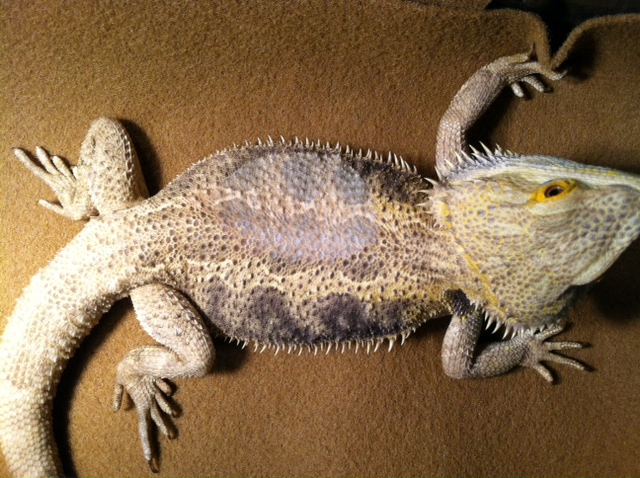 Bearded Dragon skin problem
Question
Bearded Dragon
Something is wrong with
Bearded Dragon skin problem
Question
Bearded Dragon
Something is wrong with
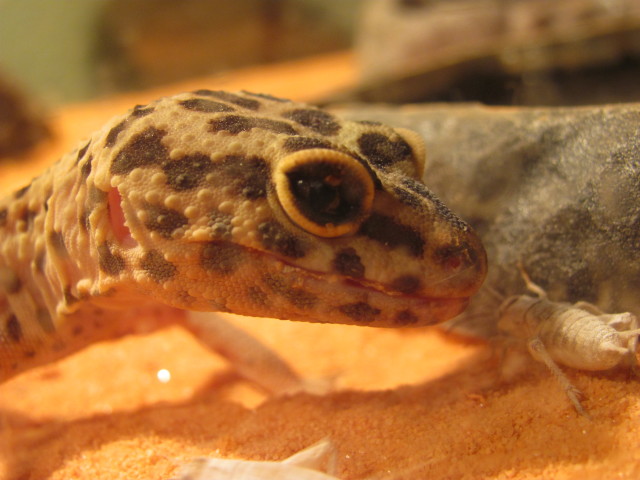 mouth issues
Questionigore
QUESTION: Hi its me again Haley. I
mouth issues
Questionigore
QUESTION: Hi its me again Haley. I
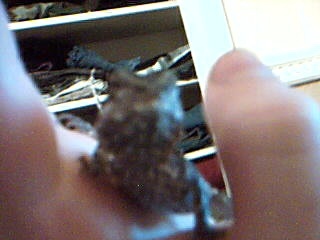 My Baby BD has a wierd mouth fungus
QuestionHis fungi/disease/cut
QUESTION: Hi, I ju
My Baby BD has a wierd mouth fungus
QuestionHis fungi/disease/cut
QUESTION: Hi, I ju
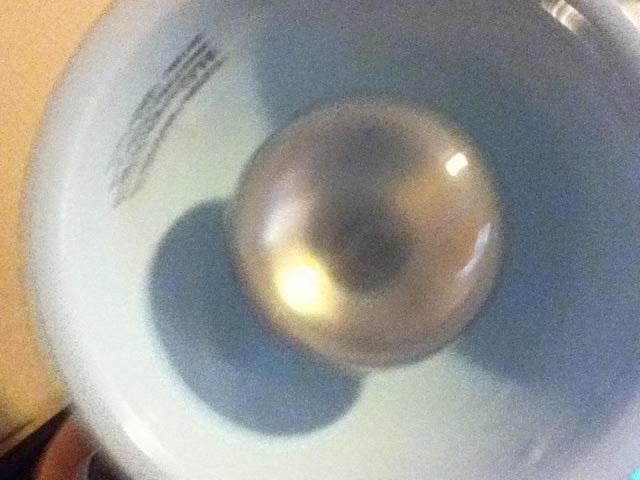 Can my bearded dragon eat dead crickets?
QuestionQUESTION: I have a about 6 month old bearded dr
Can my bearded dragon eat dead crickets?
QuestionQUESTION: I have a about 6 month old bearded dr
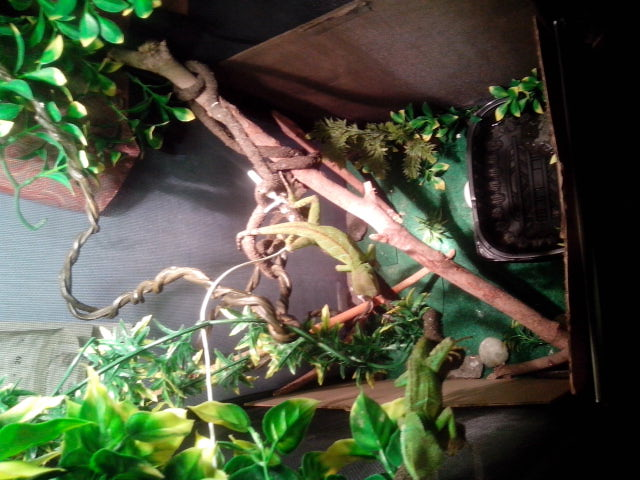 nose rub
Questionyoite and raikou new h
His mouth
nose rub
Questionyoite and raikou new h
His mouth